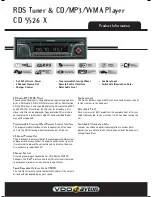
Perturbations and Errors Simulation
Satellite Navigation
110
User Manual 1178.6379.02 ─ 01
Remote command:
[:SOURce<hw>]:BB:GNSS:ATMospheric:IONospheric:KLOBuchar:
ALPHa<ch0>:UNSCaled
[:SOURce<hw>]:BB:GNSS:ATMospheric:IONospheric:KLOBuchar:
BETA<ch0>:UNSCaled
NeQuick Parameters ← Atmosphere
The NeQuick model provides electron density in the ionosphere as a function of the
position (longitude, latitude and height), time (UTC or TOW) and the solar activity.
It is based on the original profiler proposed by
Di Giovanni and Radicella, 1990
. The
NeQuick FORTRAN 77 code is available for download at the
tional Telecommunication Union Radiocommunication Sector (ITU-R)
.
The solar activity is defined with
one
of the following parameters:
●
"Solar Flux"
Flux level generated by the sun at the earth's orbit at a 10.7
cm wavelength (F10.7)
●
"Sunspot Number R12"
Averaged sunspot number R12.
You can set the R12 value or, if the "Simulation Time" is within the period form year
1931 to year 2001, use real R12 values.
("Use Measured Sunspot Number R12 > On").
Remote command:
[:SOURce<hw>]:BB:GNSS:ATMospheric:IONospheric:NEQuick:SFLux
[:SOURce<hw>]:BB:GNSS:ATMospheric:IONospheric:NEQuick:UMSN
[:SOURce<hw>]:BB:GNSS:ATMospheric:IONospheric:NEQuick:SUNSpot
MOPS-DO-229D ← Atmosphere
The simulation of ionospheric delays follows the pierce point interpolation technique
described in the
.
Atmospheric Effects and Ionospheric Errors Settings
















































